ITmedia Business Online (05 December 2019)
Unite Tokyo: Dragon Ball Video Game Development Interview Part 2
“Sorry, but would you mind throwing this away?” – The truth about the merciless rejection given by a legendary Jump editor-in-chief to a Dragon Ball game project where hundreds of millions of yen had already been spent.
On the 26th of September, Unite Tokyo 2019 was held at Grand Nikkō Tokyo, organized by the Unite Tokyo 2019 management. Today, we’ll be bringing you one of its sessions, titled “Why don’t publishing houses and game development companies see eye-to-eye? The story of how a Dragon Ball game adaptation became a huge pain in the… I mean, a great learning opportunity.”
The main star of this lecture is the legendary Weekly Shōnen Jump editor and chairman of Hakusensha, Mr. Kazuhiko Torishima, also known as “Dr. Mashirito”.1 Mr. Torishima, who was the editor in charge of the ultra-popular manga Dragon Ball, is said to have once given the producer of a video game adaptation of that property, which was in development at Bandai at the time (now Bandai Namco Entertainment), such harsh criticism that it caused the suspension of a project with a budget of several hundred million yen. Why was that? And where did the viewpoints of the game developer and the publishing house diverge? In this lecture, we plan to once again look back on these matters with the people involved.
In addition to the perpetrator of such harsh criticism, Mr. Torishima, coming to the stage today will be the victims of that harsh criticism, Bandai Namco Entertainment board of directors member, Mr. Daisuke Uchiyama, and Bandai Namco Holdings Strategic IP Headquarters advisor, Mr. Shin Unozawa. In addition to Dragon Ball Z, Dragon Ball Z 2, and Dragon Ball Z 32, Mr. Uchiyama is known for also having been the producer of huge hits such as the .hack and Narultimate Hero3 series. Mr. Unozawa is known as the producer of the TV animated series Mobile Police Patlabor and also for his tenure as CEO of Bandai Namco Games.
Moderating the discussion will be the manager of gaming website Den Faminico Gamer and CEO of Mare Corporation, Mr. Shin’ichi Taira.
We have already published the first part of this talk, titled “Jump’s Legendary Editor-in-Chief Breaks “‘the Vicious Cycle That Creates Lousy Games’ During Development of a Dragon Ball Game Adaptation“, so in this second part of three, we will be bringing you the complete truth and details about the time when a Dragon Ball game project that Bandai Namco was developing, a project that had a budget of several hundred million yen, was once completely ‘rejected’.
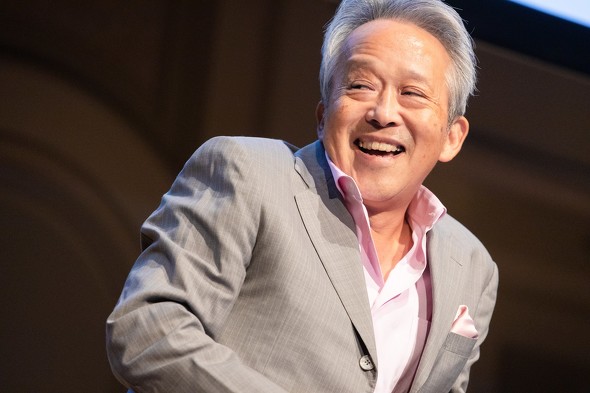
Kazuhiko Torishima is the chairman of the Hakusensha board of directors. He joined Shūeisha in 1976 and was assigned to the editorial department. As an editor, he nurtured a lot of manga artists such as Akira Toriyama and Masakazu Katsura. He was in charge of projects such as the Jump Broadcasting Station4 and Famicom Shinken5, and founded V-Jump in 1993. Famed as “The Demon Editor” who would mercilessly reject drafts, he would often be referenced as a model for characters appearing in Jump serializations, such as Dr. Slump‘s Dr. Mashirito and Tottemo! Luckyman’s Torishiman. (Photo by: Hiroki Yamamoto)
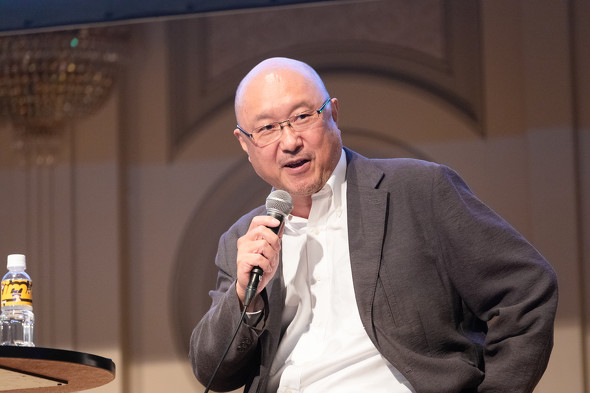
Shin Unozawa is an advisor at Bandai Namco Holdings’ Strategic IP Headquarters. He is also a former CEO of Bandai Namco Games (currently Bandai Namco Entertainment). He entered Bandai in 1981 and was involved with the planning and sales of toys such as Xabungle and Gunpla6 in the Hobby department. In 1983, he entered the Frontier division, and ever since then, he has been working as a producer for a number of movies and animated television series, such as the Mobile Police Patlabor franchise (television series and OVAs).
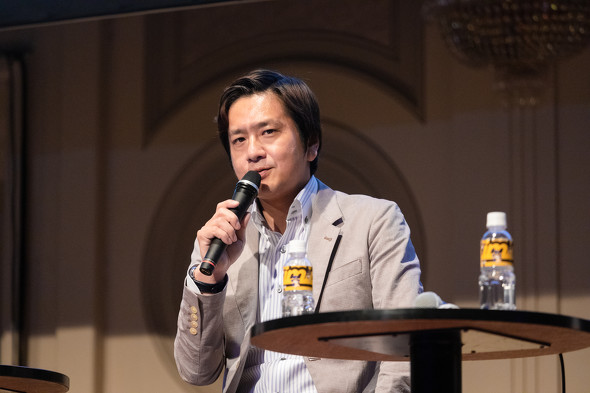
Daisuke Uchiyama is a member of the Bandai Namco Entertainment board of directors and Senior Executive Manager at the Computer Entertainment division. As a video game producer, in addition to games based on existing properties such as Dragon Ball and Naruto, he also took part in the planning of several other video games. He created the cross-media project .hack and served as the first producer in charge of the series. He is currently serving as manager of Consumer Projects and consolidates the entirety of its operations.
The game with a budget of several hundred million yen that was rejected with a single sentence: “Sorry, but would you mind throwing this away?”
Uchiyama-san, could you please read the following slide and comment?
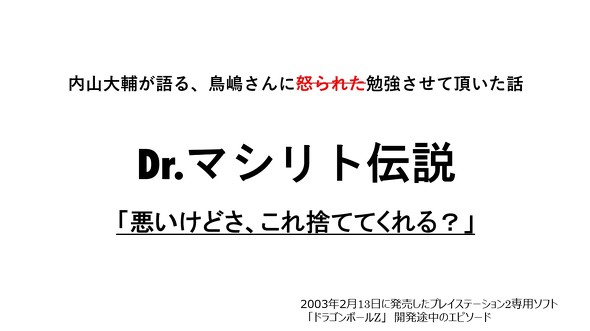
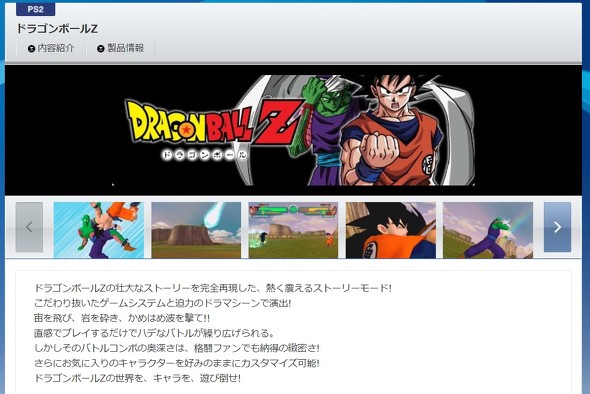
However, I was allowed to do a Dragon Ball game right after entering the company, and just before that, I had developed a Fist of the North Star video game for the PlayStation (PS1), and it sold very well as a product of nostalgia. So I thought “there’s also a lot of nostalgia for Dragon Ball Z, so wouldn’t it also sell well?”
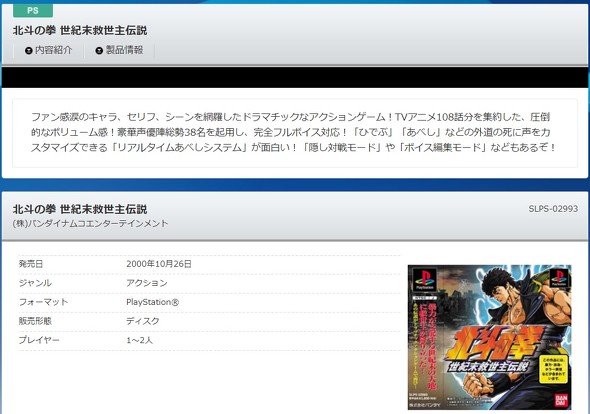
However, it seems there were rumors reaching all the way to the Jump Editorial Department that “the Bandai kid hasn’t talked to the Editorial Department at all and is just making the Dragon Ball game however he damn well pleases.” And because of that, they summoned me and Unozawa…
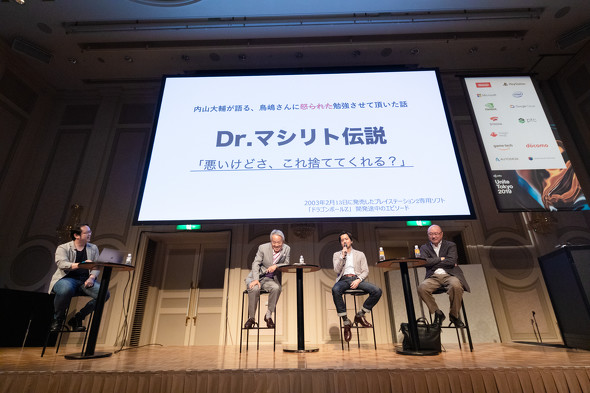
In a battleground, surrounded by ten people.
And so, they told me: “show us what you’ve been making.” I flipped through the project proposal, but Torishima-san did not read it. I even brought some footage, but he didn’t even watch it. He grabbed the proposal in front of him and told Unozawa: “Sorry, but would you mind throwing this away?”
That is to say: “The project you are all working on right now is effectively suspended.” No matter how much the development costs increase, no matter how much work has been poured into it, no matter how much it will sell, none of that matters.
He told us: “Right from the start, this project didn’t even understand these characters at all.” While not even looking at the proposal or the footage we brought.
Anyway, Torishima-san had made his verdict while the nearby editors-in-chief and deputy editors-in-chief looked on. I thought: “oh, so this is what the famous ‘rejected!’ from the manga is like.” But the real ‘rejected!’ is actually pretty hard to hear, isn’t it? That’s what I felt. I could see it clearly.
As soon as I saw the footage, I immediately thought “this is no good.” As for why it was no good, that is easy to explain. Supervisors can tell with just once glance whether the characters look like themselves or not.
The kids are fans of the original work, so if the characters diverge from that, they are fakes. As a member of the Editorial Department, I just could not approve fakes. That is why, as soon as I saw it, I thought: “these are fakes.” Those would not do.
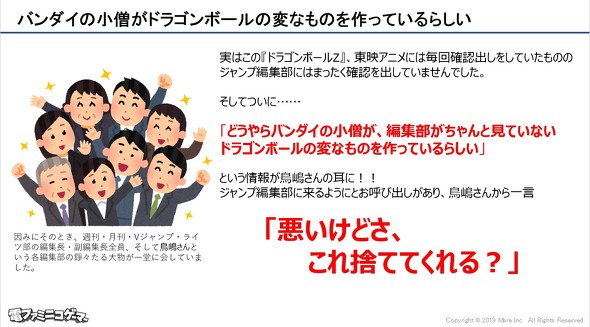
(All slides below provided by Mare)
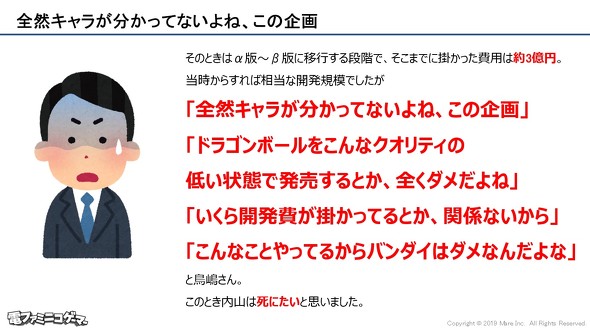
But since the project had been rejected, we had no choice but to shift course, change the project like we were instructed to and give it our all. Both me and Unozawa. So we asked them to give us a second chance, and they told us: “if you manage to bring something, then bring something that will be impossible for us not to look at.” So I think the next time we brought something to them was about three months later.
Torishima-san never gave us a detailed explanation about why the characters were bad, or why it was not a good Dragon Ball project. He just said “sorry, but could you please throw this away?”
So from then onward, we desperately thought about what we were told and spoke at length to the development team. Obviously, the release date had been delayed, the budget had increased, and there was a storm of apologies to the development team. But there was no way we were going to stop now, so we wondered how we should proceed moving forward, and yeah, it was pretty rough. And Unozawa chewed me off so much that I felt like one of those bubble gums that you chew on for so long that they’ve long lost all flavor and you don’t know why you’re even chewing on them anymore.10 (laughs) It really was rough around that time.
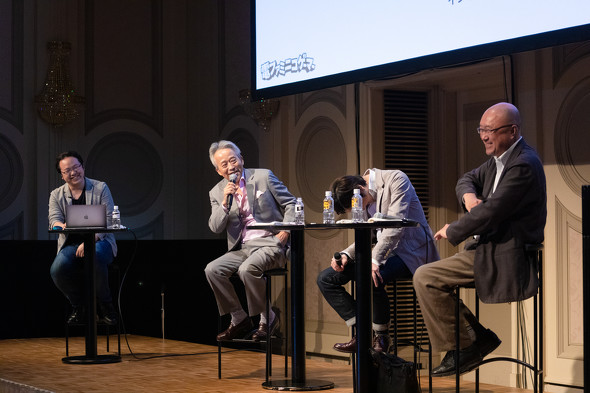
The “bootleg” the original author wasn’t being informed of
I think anyone with employees under their wing will understand, but a guy that made a big hit will also make his next project a big hit, and an even bigger one than before. That said, if you manage to do about five hits in a row, the “hit” energy will disappear, but for most people, later it will come back. But if all goes well, you might even be able to make it to the board of directors, like Uchiyama. So in that sense, if you make a big hit, I think it’s also very important to move forward with confidence.
Anyway, at the time, Dragon Ball wasn’t airing on TV and the manga serialization was also over, meaning that, since they were “finished characters,” Bandai just thought “we will do the work for you”.” “As long as we just make it, it will sell, right?” That was their mindset when they brought the project to us.
And because of that, from just one look at what they showed us during that meeting, I could see that they didn’t do any of their homework, like reading the original work or figuring out how to build the characters.
Not to mention that to not talk to the editorial department of Jump, the publisher of the original work, is just something you cannot do in the first place. If you don’t get approval from the editorial department, that is the same as trying to sell something with no input from the original author. I will just say it outright, for us at the editorial department, doing that is the same as a releasing a bootleg. Because if we were to be asked “please let us release a bootleg,” there’s no way we’d approve it.
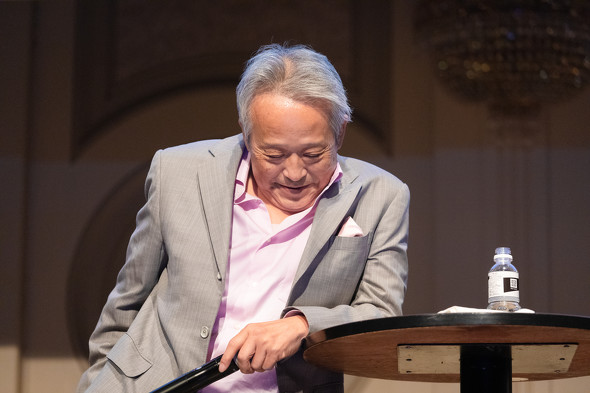
Bandai might be the ones selling the actual product, but the Jump editorial department will be the one getting all the claims from the kids
When you make games for the PS2, the development costs suddenly get really big, so 500 million yen isn’t going to cut it. But at Bandai, a development cost of 500 million yen was something unheard of. We were not going to be able to turn a profit with just the domestic sales. So we started thinking about what kind of series would also sell well overseas and realized that Dragon Ball was also popular abroad. It aired in countries like France. So when we realized that, we started thinking about making a Dragon Ball game.
Thus, we chose Dimps (located in Toyonaka, Osaka prefecture) as the developer. They had people that worked on Street Fighter for Capcom and Fatal Fury for SNK, so they were already pretty good with fighting games. We had confidence that if we actually asked a company like that, a good game could come out.
But when Bandai becomes the sponsor of an anime, we just pay an advertising agency. Having done that, in Dragon Ball‘s case, Toei Animation is the point of contact, so the Toei Animation licensing department is the one in charge of supervising the project.
But in a game, characters move and speak just like in anime, don’t they? So considering that, having to have them look over everything is pretty hard work, isn’t it? But still, what we had to do, and we did it all by the book from there on out, was that, every time we talked something over with Toei Animation, we also talked about it with the Jump editorial department. And there was no other way to go about it than to explain things the same way to both of them and have both of them give their approval. So by being very particular about the whole process, we managed to keep holding on to the license to sell the game.
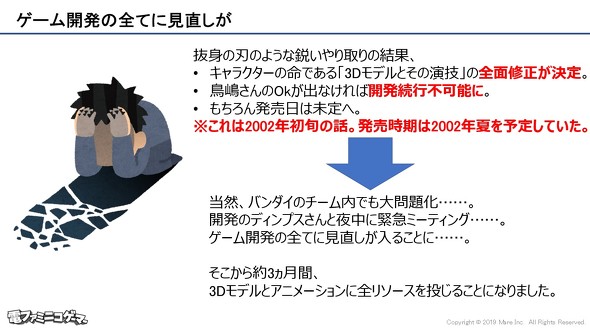
I thought he was going to say stuff like “this is no good” and “that’s also no good,” so I brought him the footage with my expectations clearly in check, but in reality, as soon as he saw it, he said “oh, this is much better” and “this is what I was talking about” and gave his approval immediately.
What I thought back then was that, if we got the approval this quickly, it wasn’t just because the CG models matched the characters or not. To get here, we and the development team faced the work known as Dragon Ball earnestly, we faced Goku and Vegeta, and we managed to make something that was actually alive. I wonder if Torishima-san also saw the seriousness and the resolve we poured into the product we showed him.
Sixteen years ago that’s what I thought, but today is the first time I wondered if that was actually the case. (laughs)
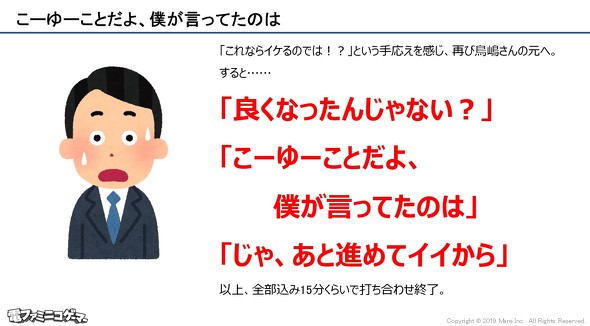
The editor represents the original author
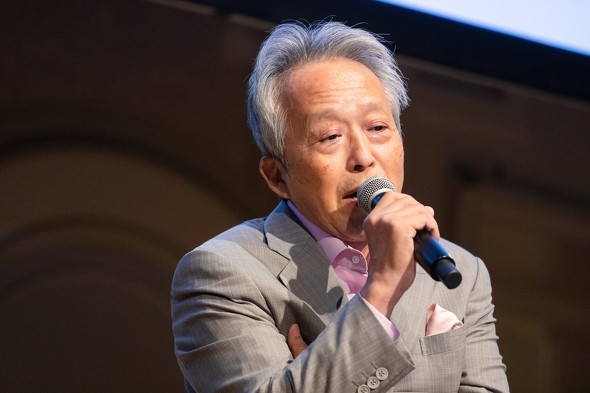
But on the other hand, since Bandai was the sponsor of the anime adaptations of not just Dragon Ball but also various other Jump properties, we also had to make sure to have a good work relationship with them.
The truth is, and this is something that I didn’t tell Uchiyama-san, but the plan to release it in August ended up being rejected, so the next period Bandai would mention was the extremely competitive Holiday season around November and December. There was no way we could tell them not to release it around then, so there was nothing to do but to approve the new schedule. Hence why I thought we’d be in trouble if Bandai had yet again brought us something that wasn’t up to snuff.
Also, since Shueisha would be releasing the Dragon Ball Kanzenban in December, there were various campaigns already in the pipeline. So if Bandai launched the game in December, Shueisha could, in a way, lend it a hand. So we approved it.
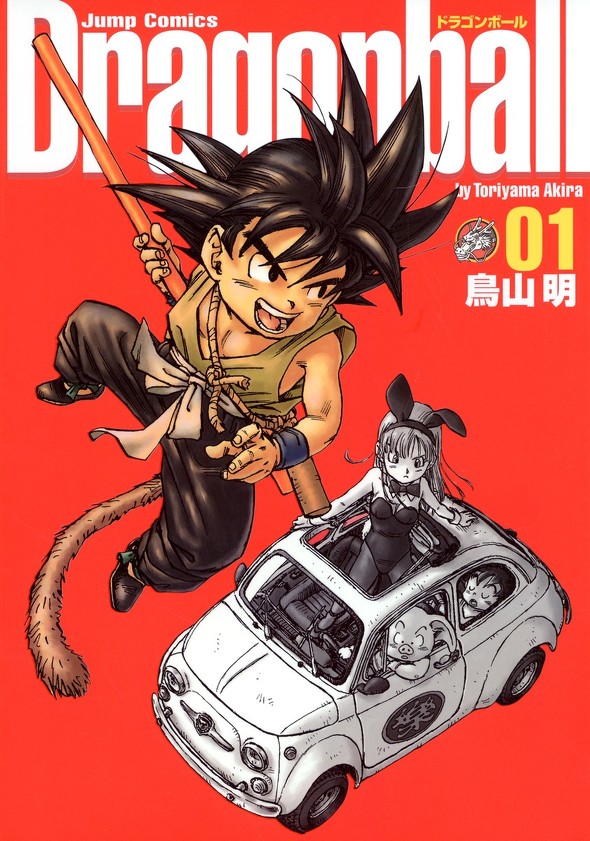
In the end, from the perfect timing that arose from that initial rejection and the seriousness in the way that we created the game, all the way to the most recent Dragon Ball games, we were able to deliver millions of copies to customers all over the world, every single year.
So when we went to Torishima-san and announced that we had orders for 180,000 copies, his instructions to us were: “At the very least, make 500,000 copies. You guys at Bandai really don’t know what you’re doing.” (laughs) And when launch day came, we sold around 550,000 copies domestically. We sold precisely the number that Torishima-san had indicated, but it did indeed sell out. Sorry about that.
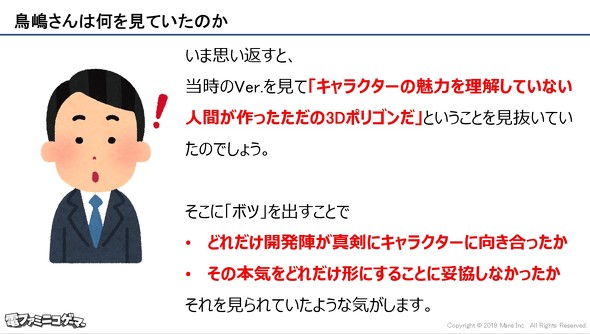
Complete suspension of work under new oversight: the state of emergency that gave rise to Dragon Ball Kai
This time, I asked you about this matter in advance and compiled it all in the following slide. Firstly, the title “The Complete Suspension of Work on Dragon Ball” is pretty scary, isn’t it?
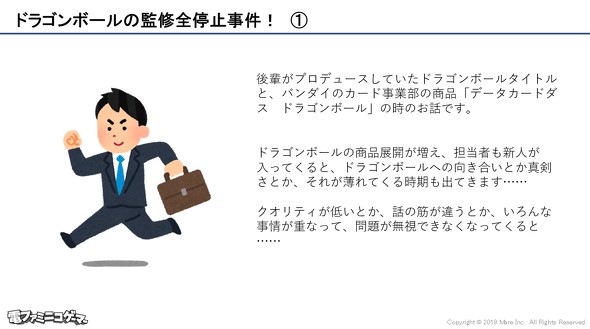
This is something that happens about every five years. That is to say, every five years, there’s some problem that slowly piled up. And when that happens, it’s pretty bad. All the groups are thrown into chaos. But when that happens, that’s when you can “tighten the screws,” you know? You can look at these characters with renewed seriousness. And as a result, quality goes up.
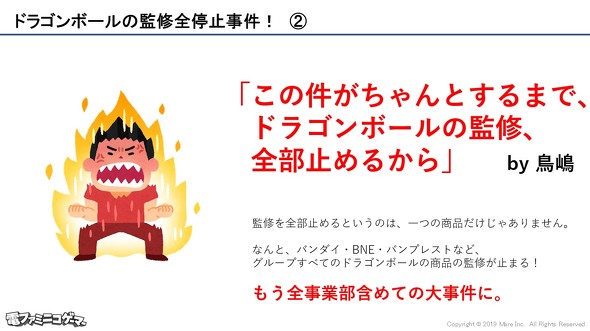
At first, Bandai’s Dragon Ball card game, Data Carddass, was selling very well, but when Konami’s Yū-Gi-Oh cards came along, the Dragon Ball cards stopped selling. The reason was simple: this was Bandai’s specialty and they were pretty good at delivering something with a big scope, but they failed when it came to the depth. They hit the ground running, but had no stamina left to finish it. The cards were easy to understand, but there was no strategy behind them.
So I mentioned the Yū-Gi-Oh example and told them “I want you to plan the card game properly,” but they didn’t take it seriously. So I had no choice but to bring in the big guns. I temporarily suspended all work and didn’t let them release a single product. Then, I told them to think about some counter-proposals and then come back to me.
That said, I did leave them a hint. Bandai started by releasing something that connected cards and arcade cabinets. At the time, Bandai Namco had just been formed, so I told them they clearly had the technology. They also should still have the designers that came up with the rules of the card game, so I told them “create a proper Dragon Ball card game as a group.” I wasn’t going to allow any more half-baked excuses, so that’s why I put a stop to it.
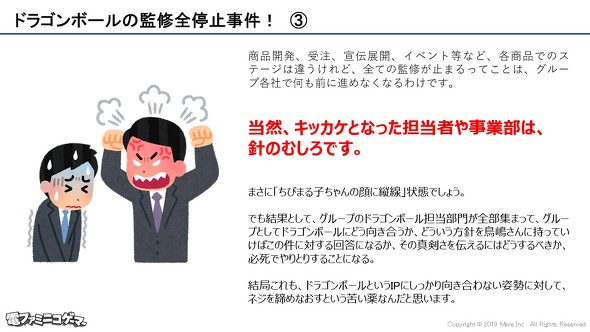
At the time, Dragon Ball wasn’t airing on TV, so it was hard to sell the products. Then, Furusawa-kun brought along this suggestion: the Dragon Ball anime was always on the verge of catching up to the serialization, so it forcefully stretched out what were ultimately just a few pages’ worth of content, and because of that, the pacing was pretty bad. So he said: “In that case, why don’t we just cut out all the filler parts and make a more faithful anime? Then, we could just remaster it and have it air on TV.” When this was suggested to a Toei Animation producer called Kōzō Morishita (currently chairman of the board at Toei), he replied with “That’s interesting.” And that’s what ultimately led to Dragon Ball Kai.
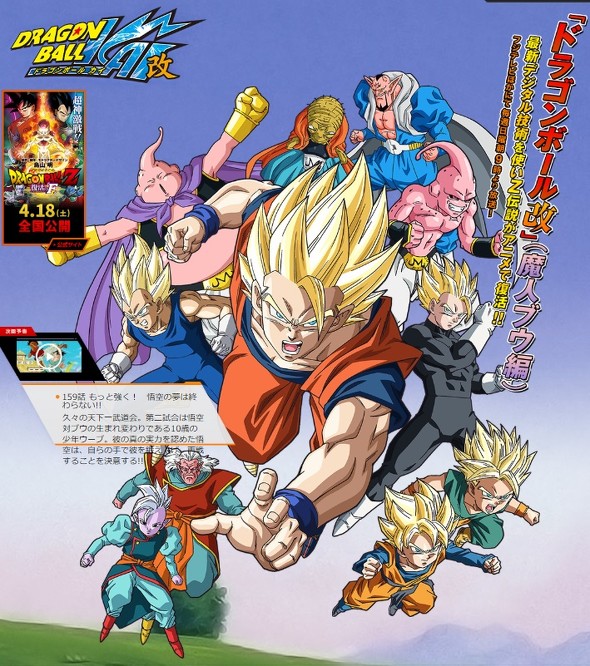
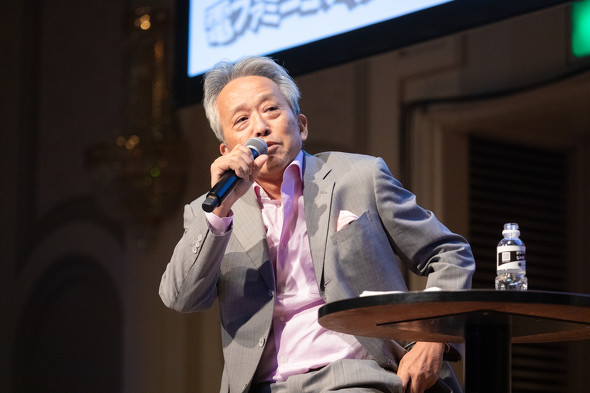
120 billion yen worth of sales in Dragon Ball-related merchandise
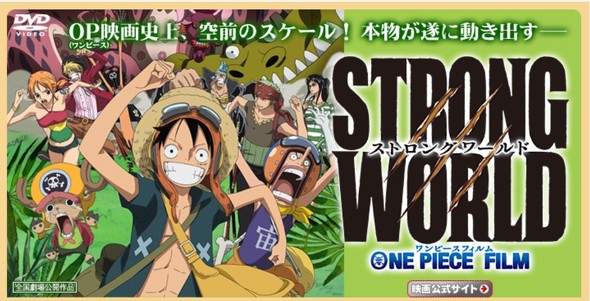
The truth is, last year (2018), Dragon Ball was the highest-selling franchise for the Bandai Namco group, with about 120 billion yen worth of sales. That’s even higher than Mobile Suit Gundam, you know. The reason it got to that point, just like I said before, was because of Torishima-san‘s sense of responsibility. I mean, at the time, Torishima-san was Shueisha’s Senior Managing Director. The Senior Managing Director checks everything, from every single individual project to even figure design. Sometimes I wonder why he’s even supervising in the first place, but having Torishima-san possess absolute authority actually made things progress more easily, you know?
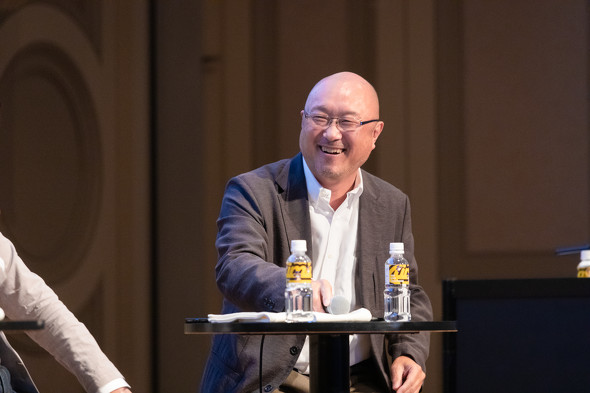
Back then, Morishita-san got very sick and was admitted to the hospital. To be honest, I didn’t think he was going to get better and be discharged. (laughs) The day before he was admitted, a very sickly Morishita-san came to me and asked me: “Torishima-san, if by any chance I manage to get better, would you agree to cooperate in doing a new Dragon Ball anime?” Since I didn’t think he was going to come back, I said “okay.” (laughs) It was a miraculous recovery, so I just told myself that now I had no choice.
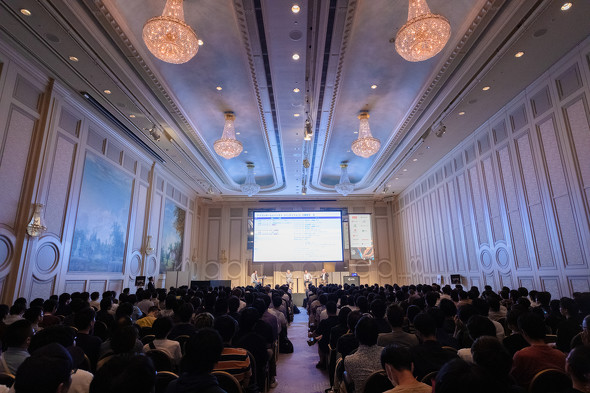
So, how do you want to do it?
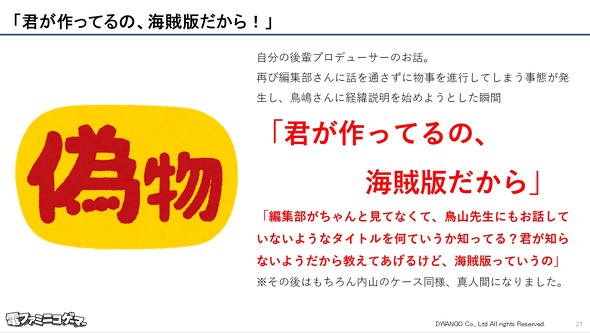
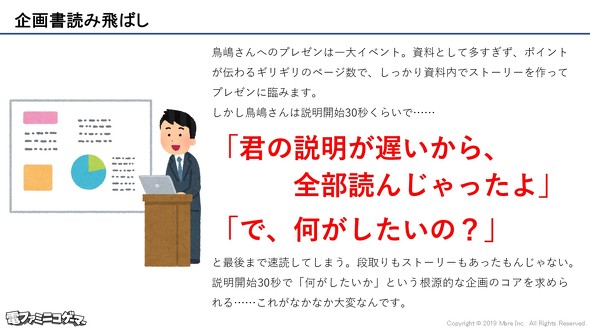
At this point, I had a story prepared, and after that, I would move on and explain what I wanted to do. To be asked “what do you want to do?” and have to skip over all of that is pretty hard. Thanks to that, I became more disciplined.
Right now, the folks at the Shueisha editorial department are letting us handle those “living characters” together with them. They are letting us build a high-level relationship with them, where, just like they have done by themselves for many years, we figure out what kind of service we want to provide for the fans all over the world, starting all the way back before even the planning stages right until we can create a story.
In fact, there are quite a lot of things that the company as a whole, the group as a whole, but also me, personally, as well, learned from hearing those “rejected” exclamations from Torishima-san; extremely obvious things, like what the characters are and how seriously we should look at them.
I always answer with a child’s point of view and on their behalf. Please don’t think that I’m the one talking, think that I’m just relaying what the millions of kids that I am representing allowed me to say. That’s how I’ve been thinking all this time.
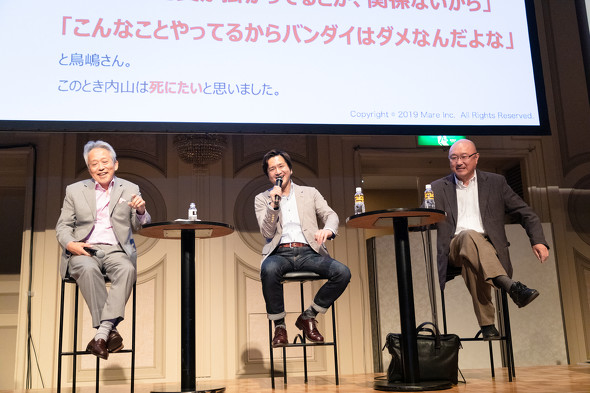
2 Known under the “Budokai” series name internationally.
3 Known under the “Naruto: Ultimate Ninja” series name internationally.
4 A reader submission corner included in Weekly Shōnen Jump from October 1982 to December 1995.
5 A series of articles about video games published at irregular intervals in Weekly Shōnen Jump from 1985 to 1988.
6 Short for “Gundam Plastic Models”.
7 Uchiyama is almost certainly misremembering, considering that the game came out in November 2002 in the West.
8 January 2004 in the United States.
9 “Fist of the North Star: Legend of the Savior of the End of the Century”
10 Literally “He wrung me out so much that I felt like one of those wet house cloths that had been wrung so much, not a single drop of water would come out of it anymore”. The verb 絞る (shiboru) has a literal meaning of “wring,” but a more colloquial use of “to reprimand” or “to chew out.” Uchiyama is playing with both meanings here.
11 The following footnote was originally provided in-line alongside the original article text; we have extracted and translated it as a footnote to maintain the flow of conversation in text: A “probability change” (確率変動 kakuhendō) is a mechanic in most pachinko machines whereby if you hit the jackpot under the standard conditions, the probability of hitting another one thereafter increases.
12 The follow-up to the Carddass series in arcades, Dragon Ball Heroes, launched in late 2010 and continues to receive updates through to today.
13 We know through additional interviews with Torishima, by way of Kazé in France (for their Dragon Ball Kai home video release), that Akira Toriyama declined working on a new series around this time. Instead, the 2008 Jump Super Anime Tour special — “Heya! Son Goku and Friends Return!!” — wound up being produced, leading to a gradual build-up of additional productions resulting in 2013’s Dragon Ball Z: Battle of Gods kicking off a new resurgeance.